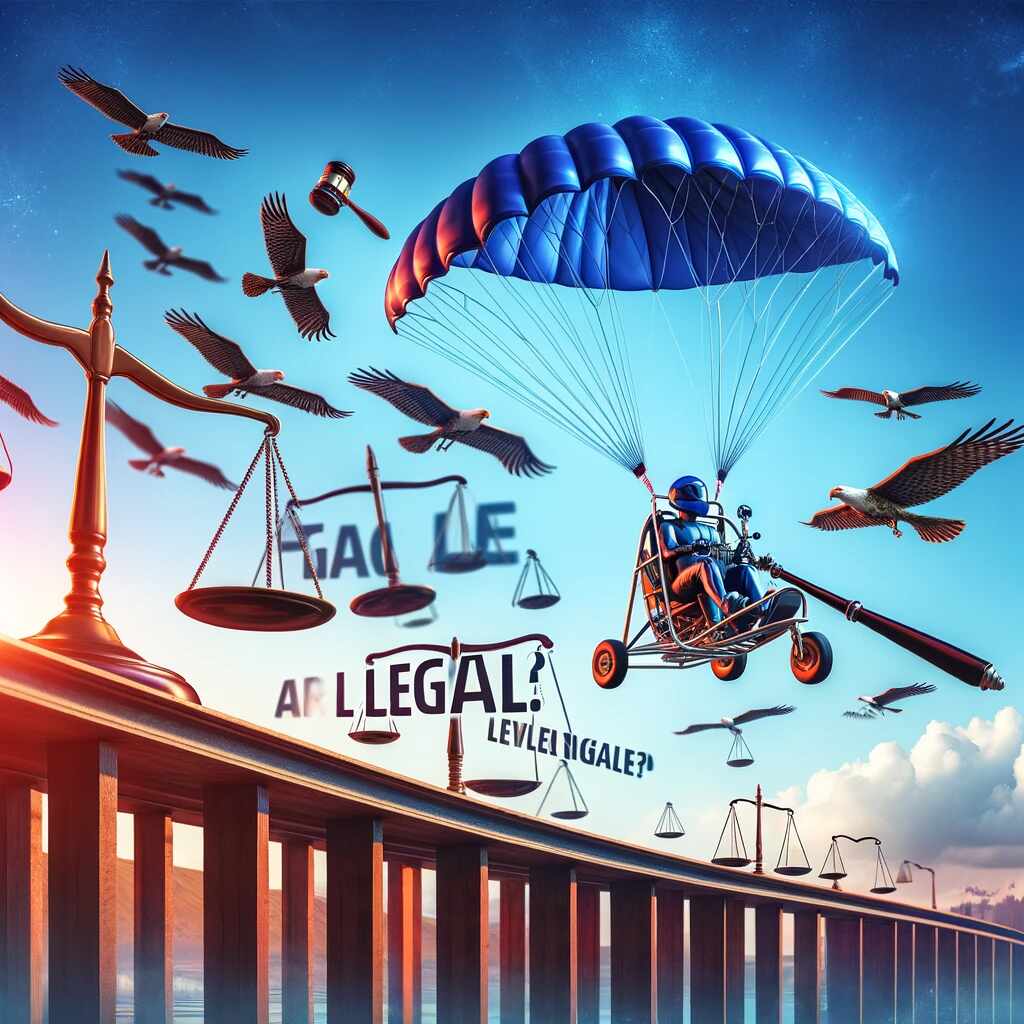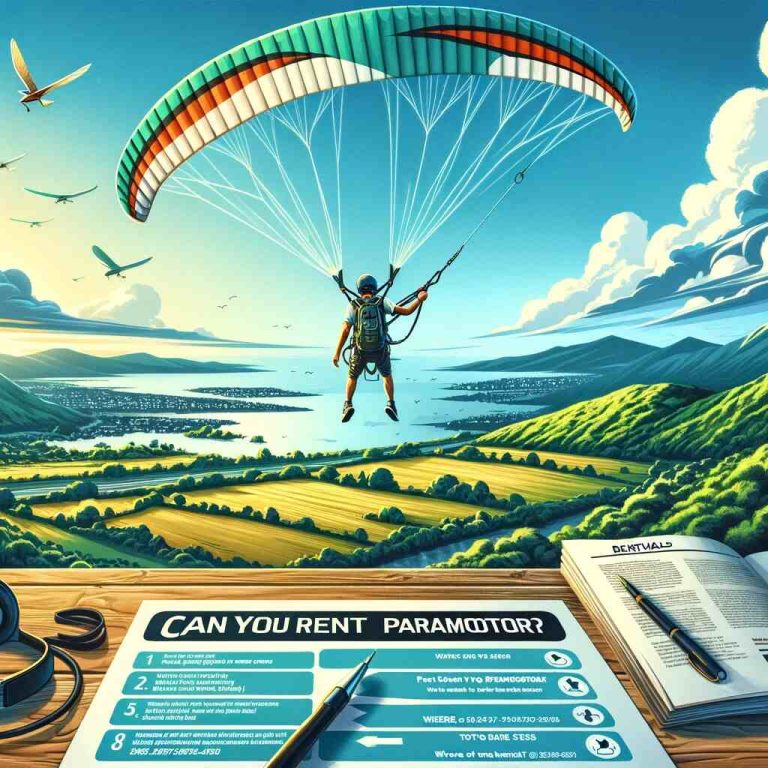Paramotoring, a thrilling and exhilarating form of powered paragliding, has gained popularity in recent years among adventure enthusiasts. This unique activity combines the freedom of paragliding with the convenience of a motorized engine, allowing individuals to soar through the skies with ease. However, as with any recreational activity, questions arise about its legality. Are paramotors legal?
The answer is yes, paramotors are legal in many countries, including the United States. However, their legality is subject to specific regulations and requirements, such as adherence to Federal Aviation Regulations (FARs) and compliance with state and local rules.
In this comprehensive article, we will delve into the legal landscape of paramotoring, addressing the various aspects that determine its legality, including regulations, licenses, and airspace restrictions.
Understanding Paramotoring
Before we explore the legal aspects of paramotoring, let’s begin by understanding what paramotoring entails. Paramotoring involves flying a motorized paraglider, often referred to as a paramotor. A paramotor consists of a lightweight engine mounted on the pilot’s back, connected to a paragliding wing. The engine provides the necessary thrust for takeoff and maintaining flight, while the glider wing allows the pilot to control altitude, direction, and speed.
Paramotoring is popular for its simplicity and accessibility. Unlike traditional aircraft, paramotors are compact, portable, and relatively easy to learn to operate. This accessibility has contributed to the growth of the paramotoring community, with enthusiasts enjoying the freedom of flight.
However, the excitement of paramotoring comes with responsibilities, and these responsibilities are often defined by legal regulations. Let’s explore the key factors that determine the legality of paramotoring.
-
Federal Aviation Regulations (FARs)
In the United States, paramotoring falls under the purview of the Federal Aviation Administration (FAA) and is subject to Federal Aviation Regulations (FARs). FARs are a set of rules and guidelines that govern all aspects of aviation, including the operation of aircraft and the conduct of pilots.
A. Part 103 – Ultralight Vehicles
For paramotor enthusiasts, the most relevant section of FARs is Part 103, which pertains to ultralight vehicles. Paramotors are classified as ultralight vehicles when they meet certain criteria outlined in Part 103. These criteria include:
- The vehicle must have an empty weight of 254 pounds or less, excluding floats and safety devices.
- It must carry no more than 5 gallons of fuel.
- The maximum level flight speed must not exceed 55 knots (63.25 mph).
- The vehicle should not be operated over congested areas or open-air assemblies of people.
If a paramotor meets these criteria, it is considered an ultralight vehicle and is subject to the regulations outlined in Part 103. Importantly, Part 103 allows for the operation of ultralight vehicles without the need for a pilot’s license, medical certificate, or aircraft registration. This aspect makes paramotoring particularly attractive to those looking for a more accessible form of aviation.
However, it’s crucial to emphasize that compliance with Part 103 regulations is essential for paramotor pilots. Failure to adhere to these regulations can result in legal consequences, including fines and the potential loss of privileges.
B. Equipment Requirements
In addition to meeting the criteria for ultralight vehicles, paramotors must also adhere to equipment requirements specified in FARs. This includes regular maintenance and ensuring that the aircraft is in safe, airworthy condition. Pilots should always inspect their paramotors before each flight and address any issues promptly.
-
State and Local Regulations
While federal regulations provide a framework for paramotoring in the United States, it’s essential to recognize that state and local regulations can vary. Some states may have additional requirements or restrictions on paramotor operations, such as specific airspace restrictions or noise ordinances. Therefore, it’s crucial for paramotor enthusiasts to research and understand the regulations specific to their location.
To find information on state and local regulations, pilots can contact their state’s aviation authority or local authorities responsible for aviation-related matters. Additionally, joining a paramotor community or club can be beneficial, as members often have local knowledge and can provide guidance on navigating regional regulations.
-
Airspace Restrictions
Airspace regulations play a significant role in determining where paramotors can operate. Paramotor pilots need to be aware of different types of airspace, including controlled and restricted airspace, and ensure they comply with relevant restrictions.
A. Controlled Airspace
Controlled airspace, such as Class A, B, C, D, and E airspace, is subject to air traffic control (ATC) and specific regulations. Paramotor pilots are generally not allowed to operate in controlled airspace without prior authorization from ATC. It’s essential to consult sectional charts and airspace information to identify controlled airspace areas and obtain necessary clearances if planning to fly in or near such areas.
B. Restricted and Prohibited Areas
The FAA designates certain areas as restricted or prohibited airspace, often for reasons related to national security, military operations, or safety concerns. Paramotor pilots must avoid these areas entirely, and entering restricted or prohibited airspace can result in severe legal consequences.
C. Special Use Airspace
Special use airspace includes areas designated for specific purposes, such as military exercises or aerobatic events. Pilots should consult sectional charts and airspace information to be aware of any special use airspace areas and adhere to any restrictions in place.
-
Liability Insurance
Liability insurance is an essential consideration for paramotor pilots. While it may not be a legal requirement in all cases, having liability insurance can provide financial protection in the event of accidents or property damage. Some flying sites or events may require pilots to have liability insurance to participate.
Pilots should consult with insurance providers specializing in aviation coverage to explore their options and choose a policy that suits their needs. It’s essential to ensure that the chosen policy adequately covers paramotoring activities and potential liabilities.
-
Training and Education
To ensure safe and legal paramotoring operations, receiving proper training and education is paramount. While Part 103 does not require a pilot’s license, it does not exempt pilots from the need for adequate training and competence. Paramotor training programs are available through certified instructors and schools, and completing such training is highly recommended.
Additionally, organizations like the United States Powered Paragliding Association (USPPA) and the US Hang Gliding and Paragliding Association (USHPA) provide resources, training standards, and safety guidelines for paramotor pilots. Joining these organizations can help pilots stay informed about best practices and connect with a supportive community.
Conclusion
Paramotoring offers a unique and thrilling way to experience the joy of flight, but it also comes with responsibilities and legal considerations. Understanding the Federal Aviation Regulations (FARs), including Part 103, is essential for paramotor pilots in the United States. Additionally, staying informed about state and local regulations, airspace restrictions, and liability insurance requirements is crucial for safe and legal paramotoring operations.
While paramotoring provides a relatively accessible entry into the world of aviation, it’s essential for enthusiasts to approach it with the same commitment to safety and responsibility as any other form of flying. By adhering to regulations, seeking proper training, and staying informed about the evolving legal landscape of paramotoring, pilots can continue to enjoy the freedom of flight while minimizing risks and legal challenges.
Remember that the legal aspects of paramotoring can evolve over time, so staying up-to-date with the latest regulations and seeking legal advice when necessary is essential for a smooth and lawful paramotoring experience. Ultimately, responsible and informed pilots can help ensure that the skies remain a safe and enjoyable place for all aviation enthusiasts.








